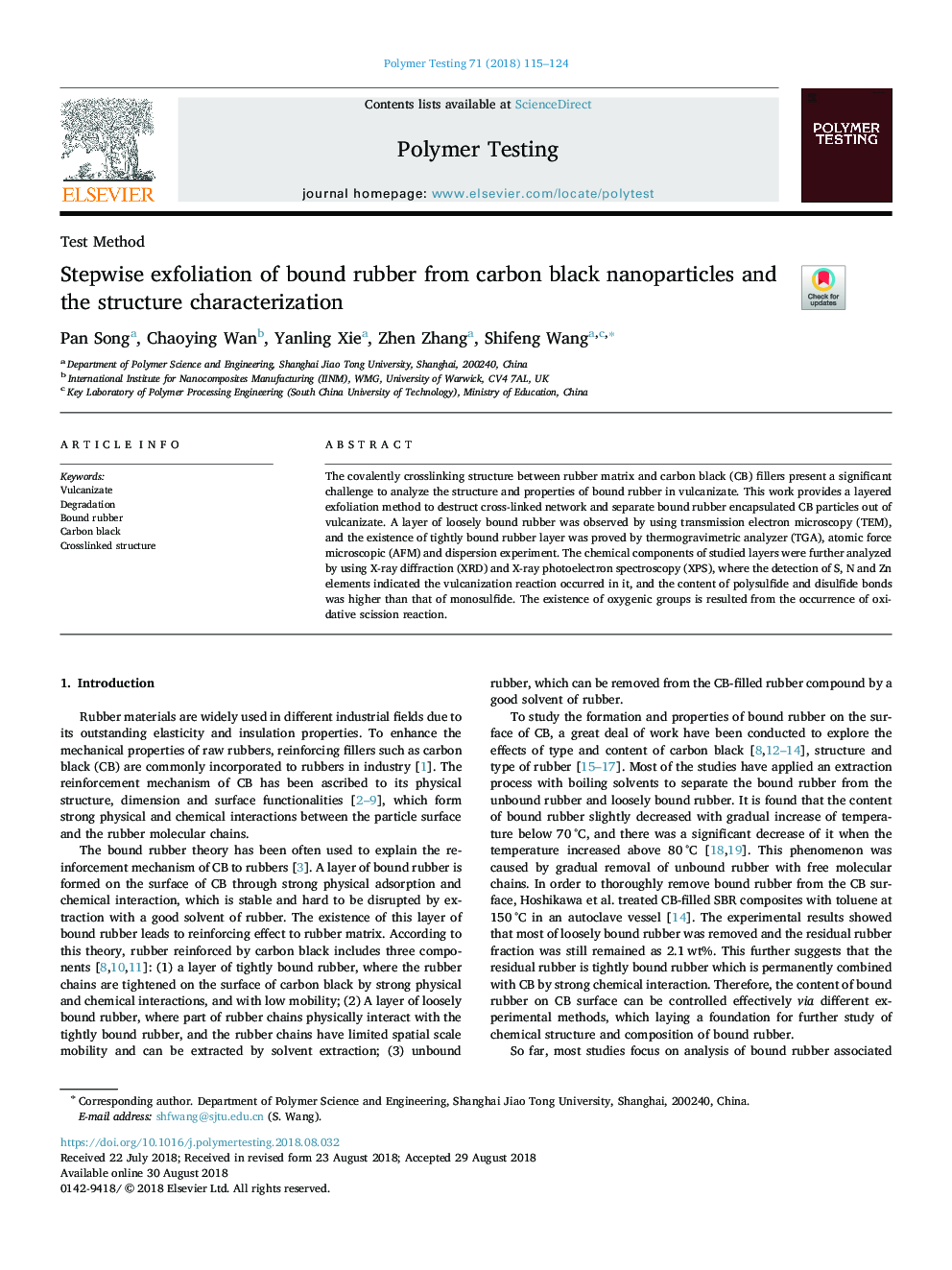| Article ID | Journal | Published Year | Pages | File Type |
|---|---|---|---|---|
| 10135260 | Polymer Testing | 2018 | 10 Pages |
Abstract
The covalently crosslinking structure between rubber matrix and carbon black (CB) fillers present a significant challenge to analyze the structure and properties of bound rubber in vulcanizate. This work provides a layered exfoliation method to destruct cross-linked network and separate bound rubber encapsulated CB particles out of vulcanizate. A layer of loosely bound rubber was observed by using transmission electron microscopy (TEM), and the existence of tightly bound rubber layer was proved by thermogravimetric analyzer (TGA), atomic force microscopic (AFM) and dispersion experiment. The chemical components of studied layers were further analyzed by using X-ray diffraction (XRD) and X-ray photoelectron spectroscopy (XPS), where the detection of S, N and Zn elements indicated the vulcanization reaction occurred in it, and the content of polysulfide and disulfide bonds was higher than that of monosulfide. The existence of oxygenic groups is resulted from the occurrence of oxidative scission reaction.
Keywords
Related Topics
Physical Sciences and Engineering
Chemistry
Organic Chemistry
Authors
Pan Song, Chaoying Wan, Yanling Xie, Zhen Zhang, Shifeng Wang,
